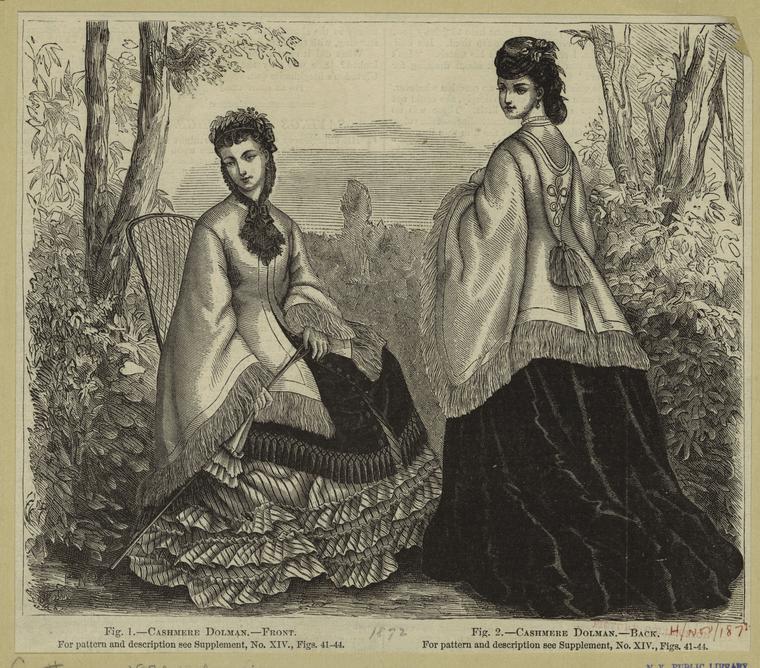Line Drawings of Victorian Mantelets, Visites and Dolmans
By Pauline Weston Thomas for Fashion-Era.com
What is a Mantle Clothing
Coats can have many names, but similar terms like mantles and mantelets are confusing. A mantle was originally a long flowing cloak without sleeves that developed into a capacious coat. A mantle would be at least three-quarter length to floor length.
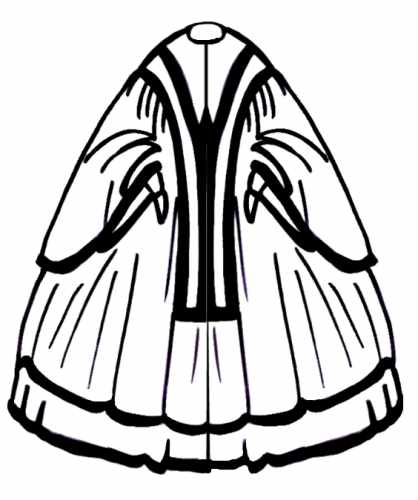
A mantelet is a shorter coat with cloak or wrap like qualities often emanating from interestingly devised sleeves or illusion of sleeves. Mantelet can be spelt mantlet.
The early mantelet or mantelet, mantles clothing of 1730 began life as a simple silk or taffeta cape with a scarf-like formation. It had longer front points that passed and crossed to the waist, often being able to be passed to the back.
It came back into favor in various similar forms in the late 1820s, but then the scarf ends reached the knees and sometimes it was called a pelerine.
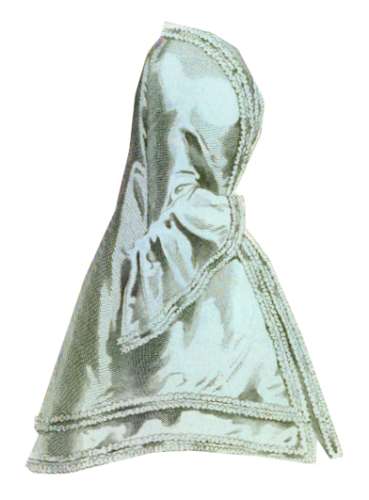
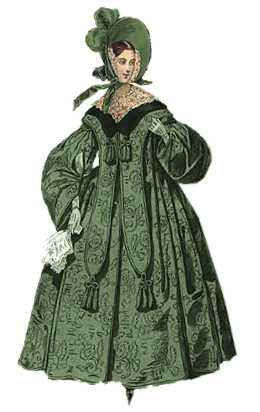
It remained popular as a scarf-like form until the 1840s when it was somewhat supplanted by a fashion for fine wool shawls.
Then in the 1850s it revived as fashion and below, I have some color-tinted pictures of early Victorian mantelets taken from some of my fashion plates from both Le Moniteur De La Mode April 1850 and an advertisement for Sewell and Comp Soho London 1852.
One of the most simple styles is shown above.
After that the mantelet became a distinctive fashion garment in its own right, changing style lines as clothes worn beneath also changed the final silhouette.
Victorian Mantelets
In the early and mid-Victorian eras, a mantelet was more evenly balanced lengthwise than at other times.
Later it became longer in the front fanning well over the domed front sides of crinoline skirts. The mantelet changed more to a half jacket with capacious sleeves and its contour changed with the fluctuations of sleeve styles and crinoline fullness.
As the years passed and bustles arrived it became much shorter either ending abruptly at the back waist level or developing peplums that fanned or spread into longer separate tails intended to fan over the skirt. The back was invariably a different silhouette to the front view, sometimes with longer back tails and a short front and at other times longer front tails and a shorter back.
In the later Victorian era, two main styles of mantelet existed and focused on how the sleeve area was handled. Sleeves existed but sometimes appeared as if they were an illusion. The first very visible sleeve was the dolman and was cut wide and generous, especially at the bottom width. The dolman mantelets shown directly below were fitted and shaped to follow the body silhouette of the 1870s and 1880s whilst accommodating decorated sleeves and bustle changes.
Opera Dolman Mantelets
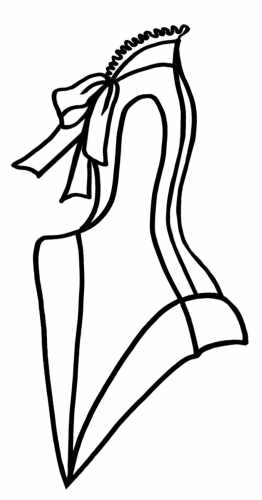

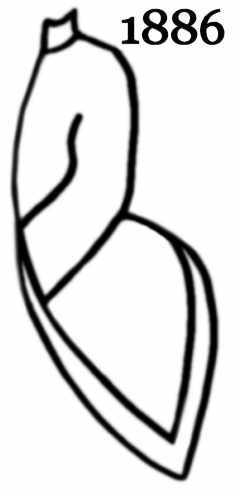
The second mantelet styling shown below gave rise to a sleeve slit called a sling sleeve. Little peplums were an attractive and practical back finish.
1887 Mantelet Back and Front
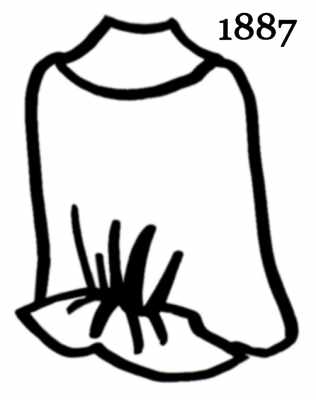
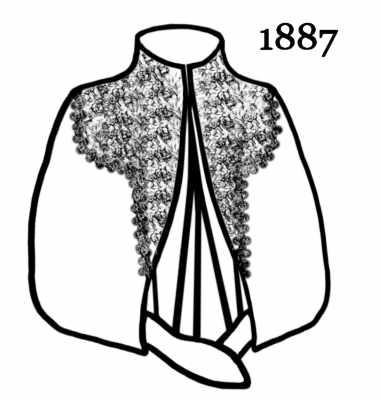
The short-backed mantelet enabled a lady to retain the overall gorgeous effect of her ensemble revealing the wonderful ornate bustle skirt back pouf.
The protruding bustle dress skirt of the second bustle period after 1883 created a harder silhouette outline than the softer first bustle period, giving a woman the appearance of the covered hind legs of a horse.
Mantelets with Lappet Tails
The Victorians of the 1880s favored mantelets which often had the appearance of a cloak with hanging loose sleeves and longer front tails called lappets.
The cape section often terminated at the armholes and later in the 1880s the sleeve section became enclosed to give the unusual silhouette with sling sleeves.
The width and generous cut of the cape-style sling sleeve suggest that this item was able to accommodate the new fuller heads of sleeves circa 1889 to 1891.
The width of sleeves circa 1889 to 1891
The tails or lappets would hang down over the skirt front, or, if the skirt was more domed, or the woman was pregnant they would gently fan out over the abdomen. The lappets provided an attractive contrast of fabric to the skirt beneath.
Fitted Mantelet with Four lappetsMantelet with Twin Cape Effect and Lappets
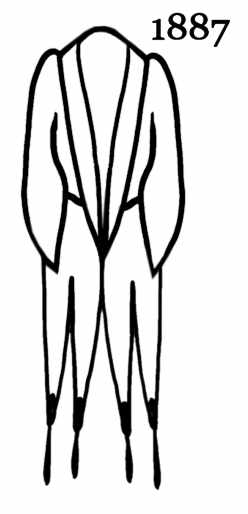
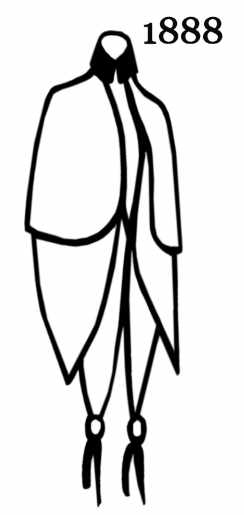
During both bustle periods, the cut had to change to allow for the bulk of the bustle. The looser cape-style back of this mantelet above right is in line with the later 1880s to early 1890s waist-long capes rather than the earlier peplum-style finished mantelets.
Variations of these styles continued and changed to accommodate the dress underneath until the 1890s when at the turn of the century the fashion for mantelets with tails waned.
Visite Mantelets
The mantelet could also be called a visite or visite mantelet.
Neat visite mantelets were most worn with a tonally suitable dress as part of a late Victorian visiting toilette. The 1880s and 1890s were a peak decade of the Victorian’s obsession with calling and visiting etiquette. The medium weight of the mantelet with a perhaps lightly quilted lining enabled the carriage class wearer to alight from a vehicle with relative ease and then sit in a drawing room for a short visit, without either disrobing or disturbing the overall effect of her gorgeous attire.
Etiquette books and articles such as those in The Englishwoman's Domestic Magazine or Queen magazine advised ladies making up their trousseaus to ensure they had at least 2 or 3 evening wraps among their purchases and these would have included mantelets and cloaks.
All mantelets could be trimmed with decoration such as contrast moiré or velvet banding. Ornate macramé fringe, and applied lace were also used to add a flourish of sumptuousness. Popular materials included the use of velvets, plushette, velveteen and sateen.
Two delightful examples of a visite mantelet with a short peplum style back and lappet tails are shown in La Mode Illustree Fashion Plates in Full Colour, edited by Florence Leniston, where all fashion plates
shown are dated 1886.
The Use of the Spanish Matador Style Epaulet or Mancheron
A designer touch sometimes used on the shoulders of a mantelet was the use of a decorative epaulet called a Mancheron. The Mancheron would be a cascade of passementerie and jet or other bead fringe in the Spanish Matador style, so popular at various times in the mid to late Victorian era.
Fashion Plates of Mantelets
On the next page I have some lovely pictures of early Victorian mantelets taken from some of my fashion plates from the Le Moniteur De La Mode April 1850 and an advertisement for Sewell and Comp Soho 1852.
Mantle Clothing Fashion Plates
Tinted Fashion Drawings of Mantelets.
First Source - Le Moniteur De La Mode April 1850.
In the early and mid-Victorian eras a mantelet was more evenly balanced lengthwise than at other times.
The mantelet changed more to a half jacket with capacious sleeves and its contour changed with the fluctuations of sleeve styles and crinoline fullness so that it became a distinctive fashion garment in its own right, changing style lines as clothes worn beneath also changed the final silhouette.
Victorian Tinted Fashion Drawings of Mantelets
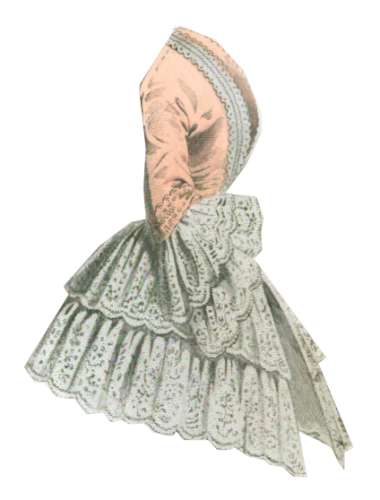
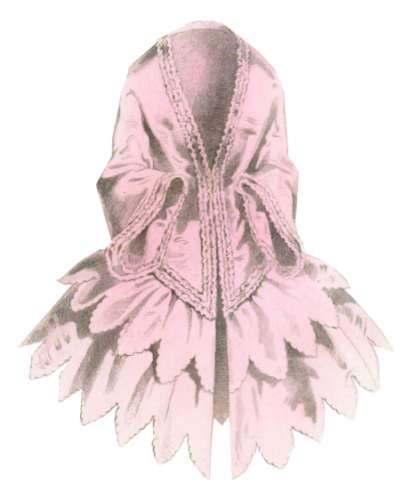
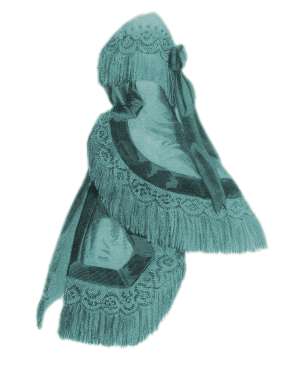
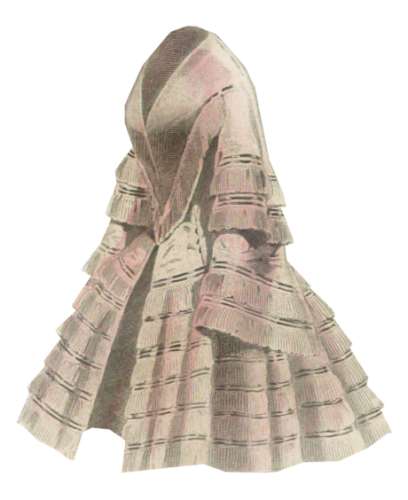

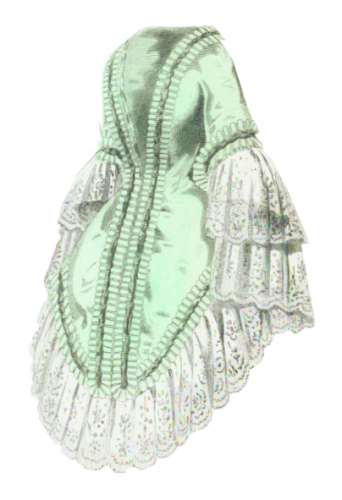
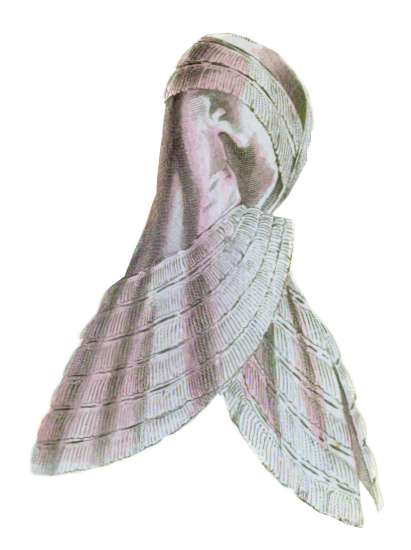
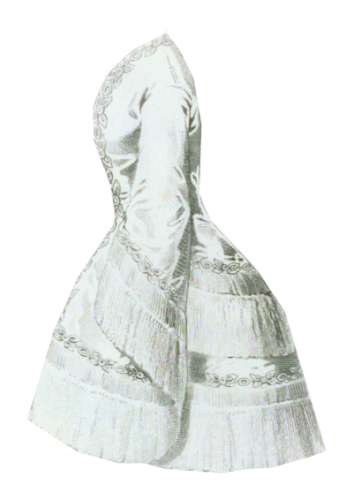
Second Source Below is from an Antique Print Advertisement by Sewell and Comp of Soho 1852.
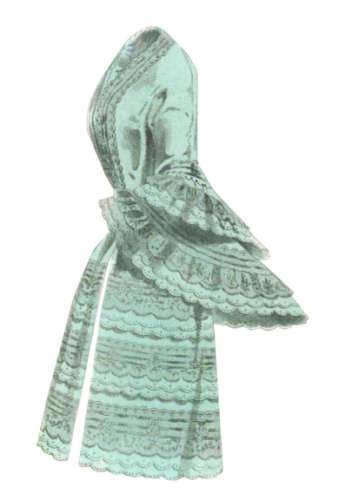
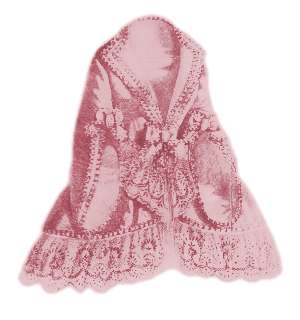
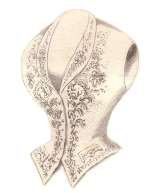
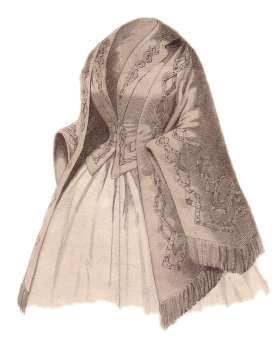
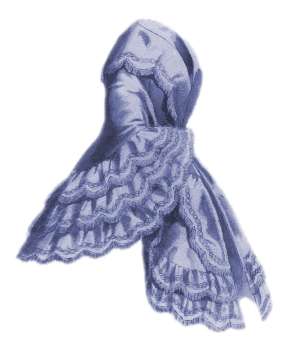

Exquisite Paris Fashion Mantelets of 1852
When worn in the 1850s with a waistcoat as shown above, the mantelet made quite a fashionable statement. Later the mantle clothing became longer in the front fanning well over the domed front sides of crinoline skirts.
